VISIT TO MANOVIKAS KENDRA AND INTERACT WITH THE CHILDREN, KOLKATA, WEST BENGAL
17-05-2007 : Kolkata
Let my brain Remove the Pain
In giving, you receive happiness
Dear children and care givers. I have come across many noble souls and caring organizations which enable specially abled children and people to blossom in various fields of life. I would like to share a few examples which I have personally come across.
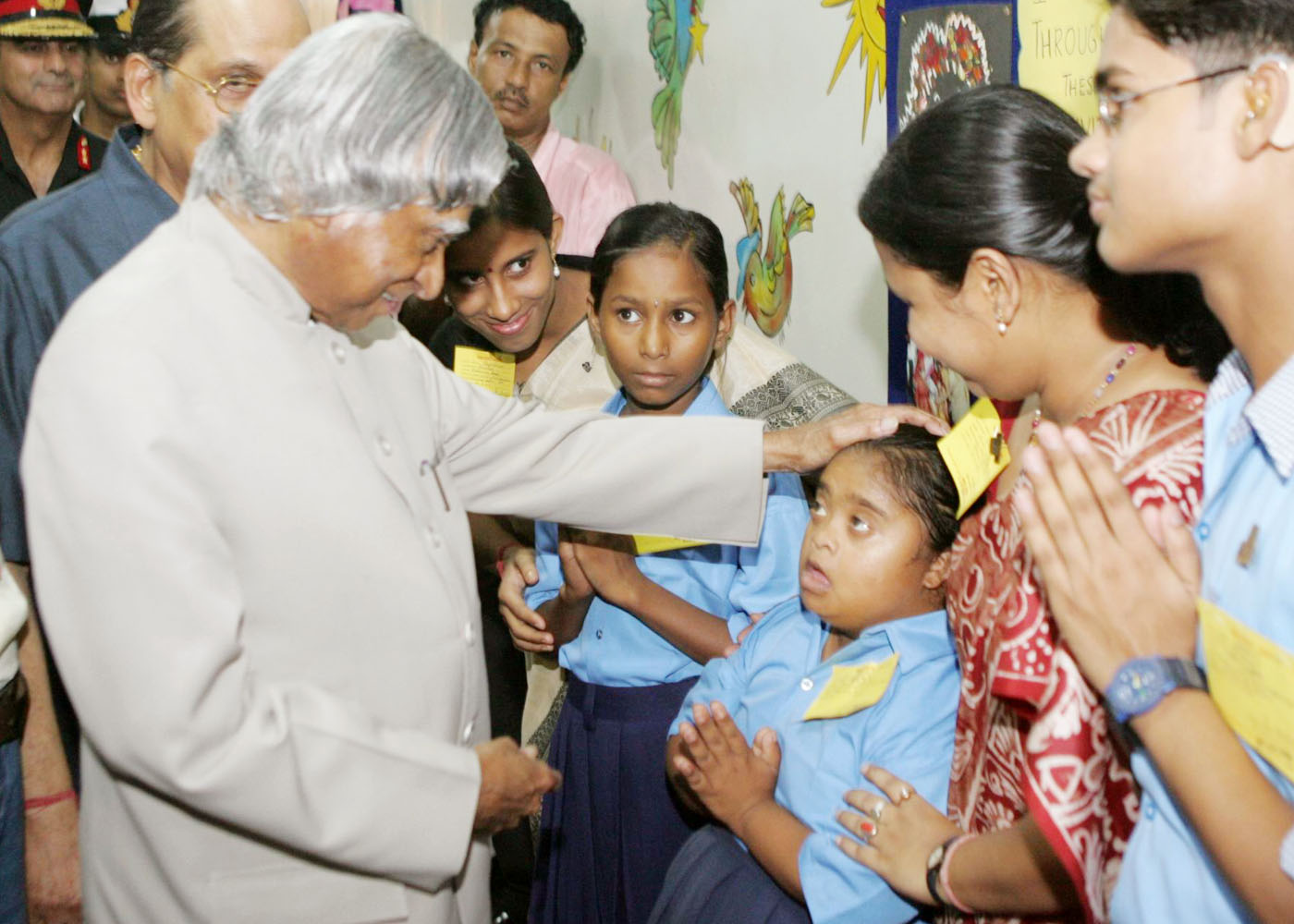

My experience with a special young man
I met Shri Siddharth Jayakumar at Chennai, who was born in Chikmagalur in Karnataka in the year 1980. He gave me a presentation using a laptop. His Father?s name is Shri Jayakumar and his Mother?s name is Komala. When he was born, the doctors did not know what he was suffering from. Later on, they said he was mentally retarded. After detailed examination, it was found that he was suffering from Cerebral Palsy. As a result of this disease he had difficulty in co-ordination between his mind and body. He studied in Vidyasagar at Chennai. Though he studied very well, he had to dictate the answers to another student while writing the examinations. In spite of this process in the 10th class examination he scored 80%. He says he could not score more just because he was not allowed to do the practical and could not draw the diagrams. In the plus two examinations, he secured an overall 90% and scored 100% in computer science. It is pertinent to note that he is the only boy to score 100% in this subject. Later he studied B.Com and scored 75%. He wanted to study Masters in Social Work, whereas he was given M.A. Economics in the Loyola College. He scored 78% in his final examination. Shri Siddharth after completing his M.A., worked as a teacher in Vidyasagar itself. Later he attended Disability Job Fair, organized by Ability Foundation, an NGO working for the welfare of the disabled. In the job fair he was selected by ABN Amro looking at his academic track record. ABN Amro has designated him as an Officer for verifying the export and import documents of the clients. To enable him to perform this job, ABN Amro has trained him to learn the banking and import and export procedures of countries like Japan, Korea, Indonesia, Thailand and Australia. He is the first student to be employed with Cerebral Palsy outside Vidyasagar school. He loves Mathematics. He has a mission of carrying out social work particularly for uplifting the life of special people with multiple disabilities. What a beautiful thought. The experience of Shri Siddharth clearly brings out the special strengths available with certain people with some disabilities. Two important thoughts emanate from Siddarth?s life.
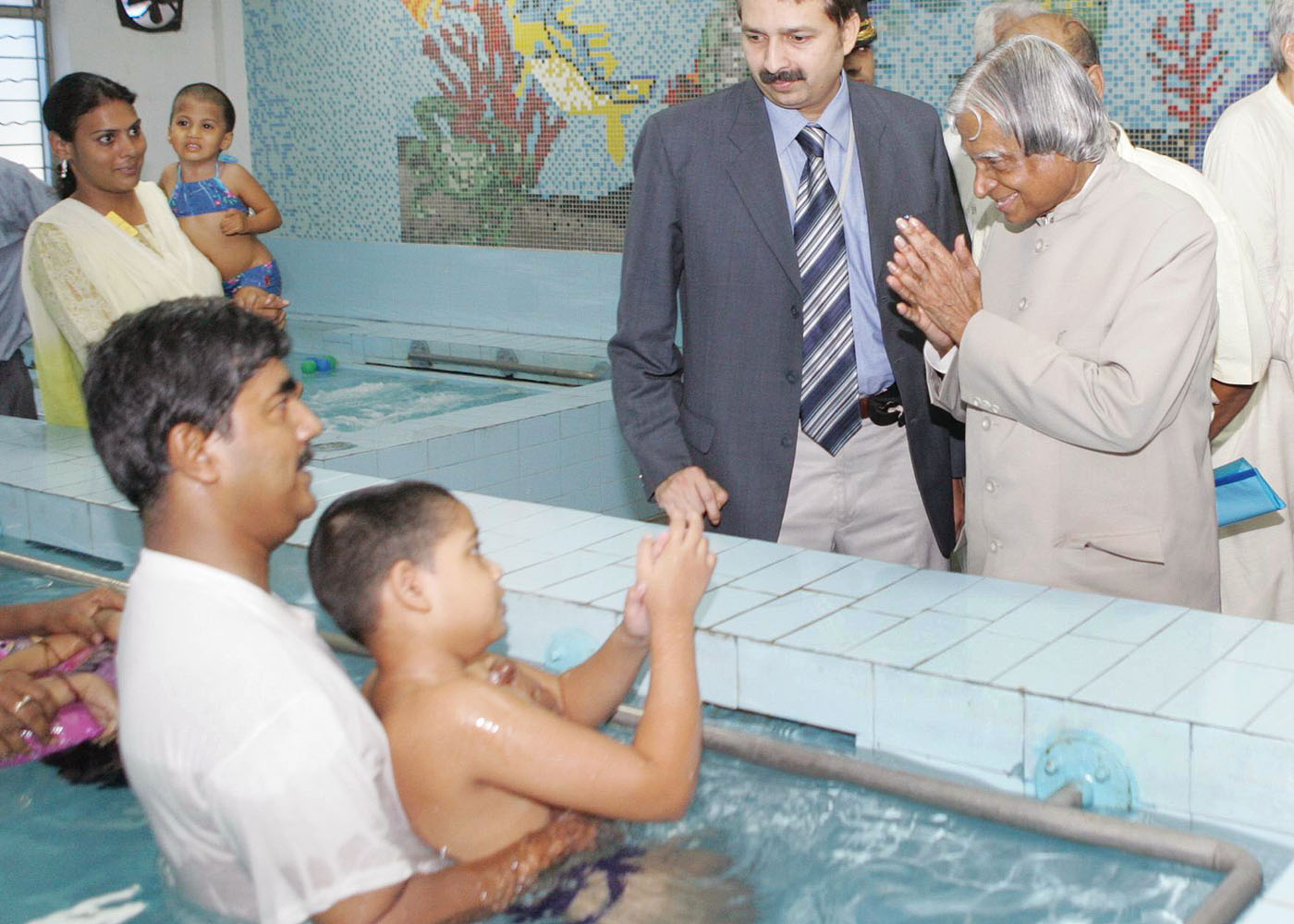
a. The will power of Siddarth that ?I will win, I will win? can be propagated among all the children.
b. The initiative of ABN AMRO to take a special person like Siddarth for regular work in the bank shows how it values the inherent strength and knowledge of the person irrespective of the difficulties. This type of outgoing effort of an organization can be followed by many institutions.
Now, I would like to discuss certain observation on autistic individuals and researchers associated with them.


Speaking through events
This pertains to the behaviour of an autistic child Ms. Presca aged seven. She was shown a mirror. She became very happy and wanted to hold the mirror close to her. The teacher, after some time did not allow her to keep the mirror. Later, she was given the mirror. She held it close to her face and enjoyed seeing her own image. Then she wanted to see the image directly without the mirror. She turned the mirror and wanted to see the image. It was not there. She felt lost. She had a set back. She hit herself and she began to beat the teacher also. She made noise and showed her displeasure. The more the teacher tried to pacify, the more she continued beating the teacher and herself. Later when she was not able to have her way, she began to hit herself again. The relief for her pain was found through injuring herself and others close by. After a while she became moody.

In another observation, a boy called John aged nine years was on the swing for a long time. He was thoroughly enjoying and even making some sounds at times. As he was swinging, another boy passed quite close to him, which tempted John to give the other boy a nice hit. The one who got the hit did not respond at all. Immediately after giving a hit to the other boy, John began to hit himself mainly on his own head. At times he was biting his own hand. Now the teacher was clearly saying ?No? to John. But it did not do any good. The teacher asked John to keep the hands in the trousers pocket which he did for a while. But immediately he reverted to the hitting style. Then the teacher began to take the child away from the swing to the class room. All along John was restless and hitting himself. It has been always noticed that any objection to the behavior of an autistic child is always countered by hitting himself and hitting back or biting the other person namely the teacher. In this particular case John gave a painful bite on the hand of the teacher resulting in the need for a tetanus toxide injection.

This is the typical behavior of an autistic child. This explains the way the children regress to autistic state. They find that they have done wrong, they feel guilty and they are unwelcome and also they deserve punishment. Under this situation they want to be away and alone. They inflict punishment on themselves and try to run away from the society to their own world. We perceive world through our limited senses and try to create reality using our own imagination. For an autistic child this imagination is not there. For all the non-understood reality, there is nothing to fill the gaps except their own guilt. What can we researchers do to save them?
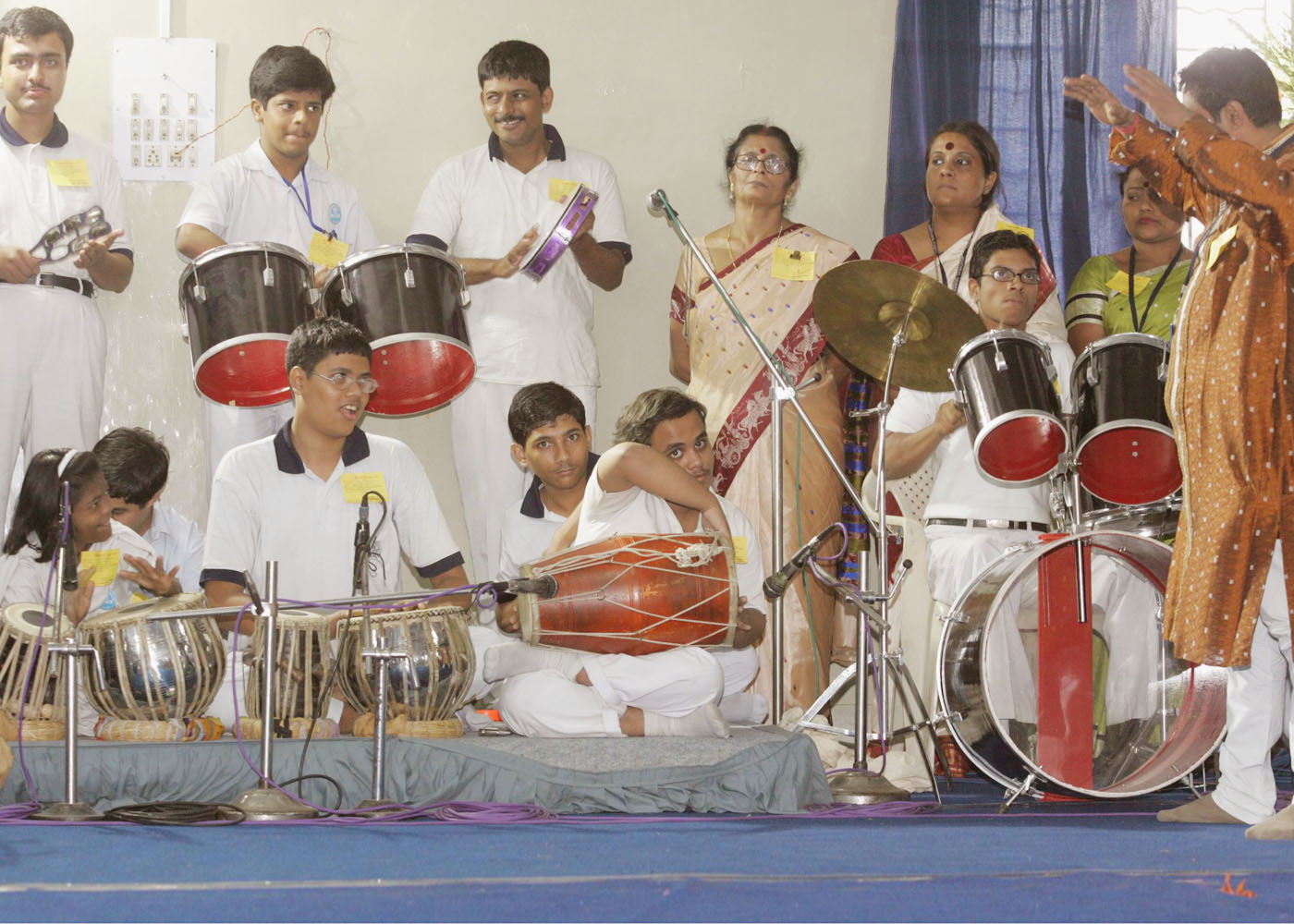
At what age do they start realizing their mistakes and have guilt feelings? At what point, do they start drifting from the society when they have set backs and lost feelings?. What could be the methods suitable to divert the attention of such children from their injurious tendencies? Each child will have unique ways of getting diverted from a state of mind. In our view, a sweet, a melodious song, a story or a scene swinging the child in one?s hands, moving to a more familiar place, could all be useful for smoothing the child?s mind. I also believe mother?s presence, presence of good acquaintance, presence of pet animals could also work wonders. In a joint family or large family there will be some elderly persons to divert the attention through some experience based imaginative solutions. Just shouldering the child for a while is very much enough in many cases. Where there are not enough people to guide the child and divert the attention of the child, the child will be regressing into a self imposed imprisonment.
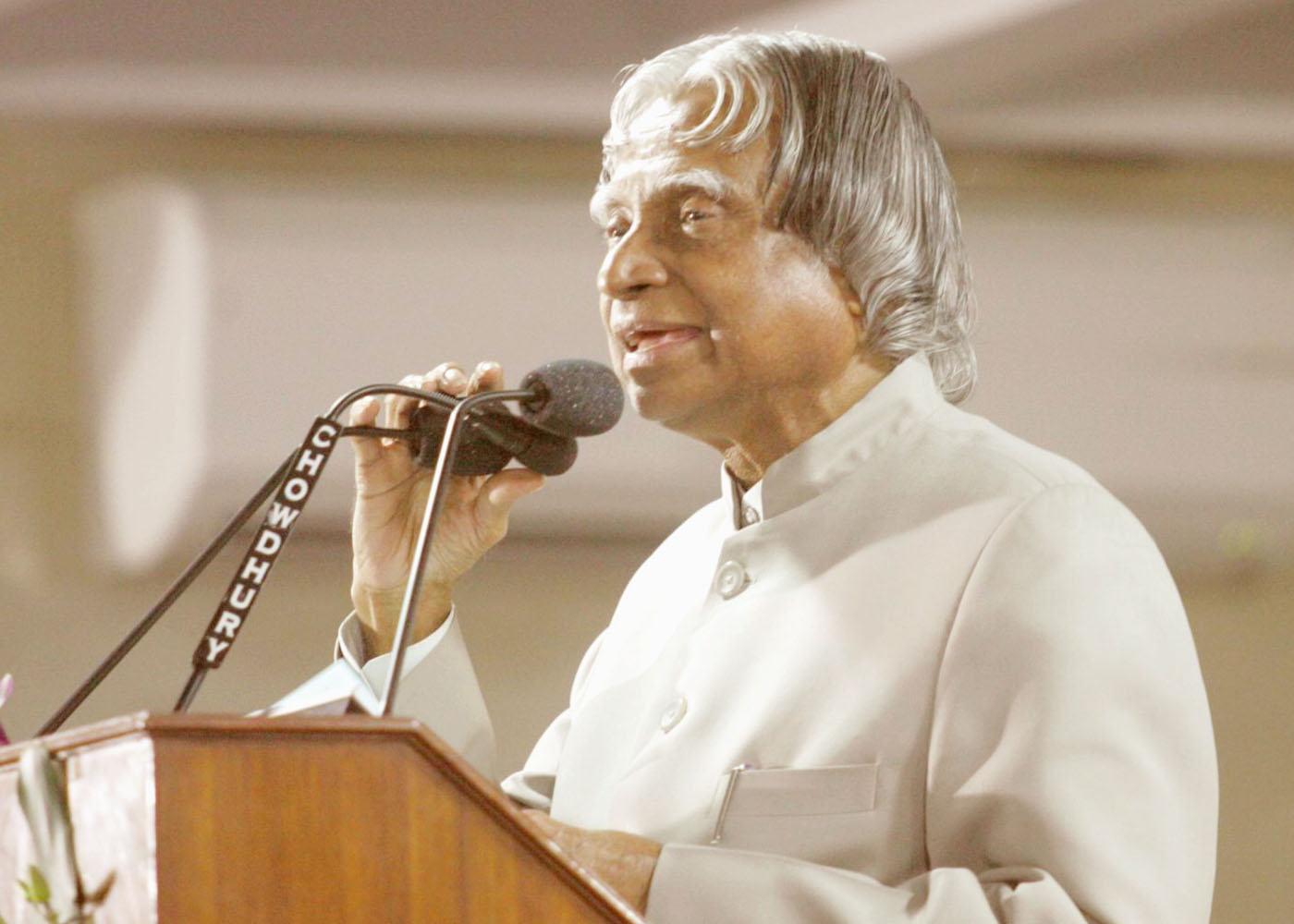
Now, I would like to touch upon an area where technology can aid children to overcome disability.
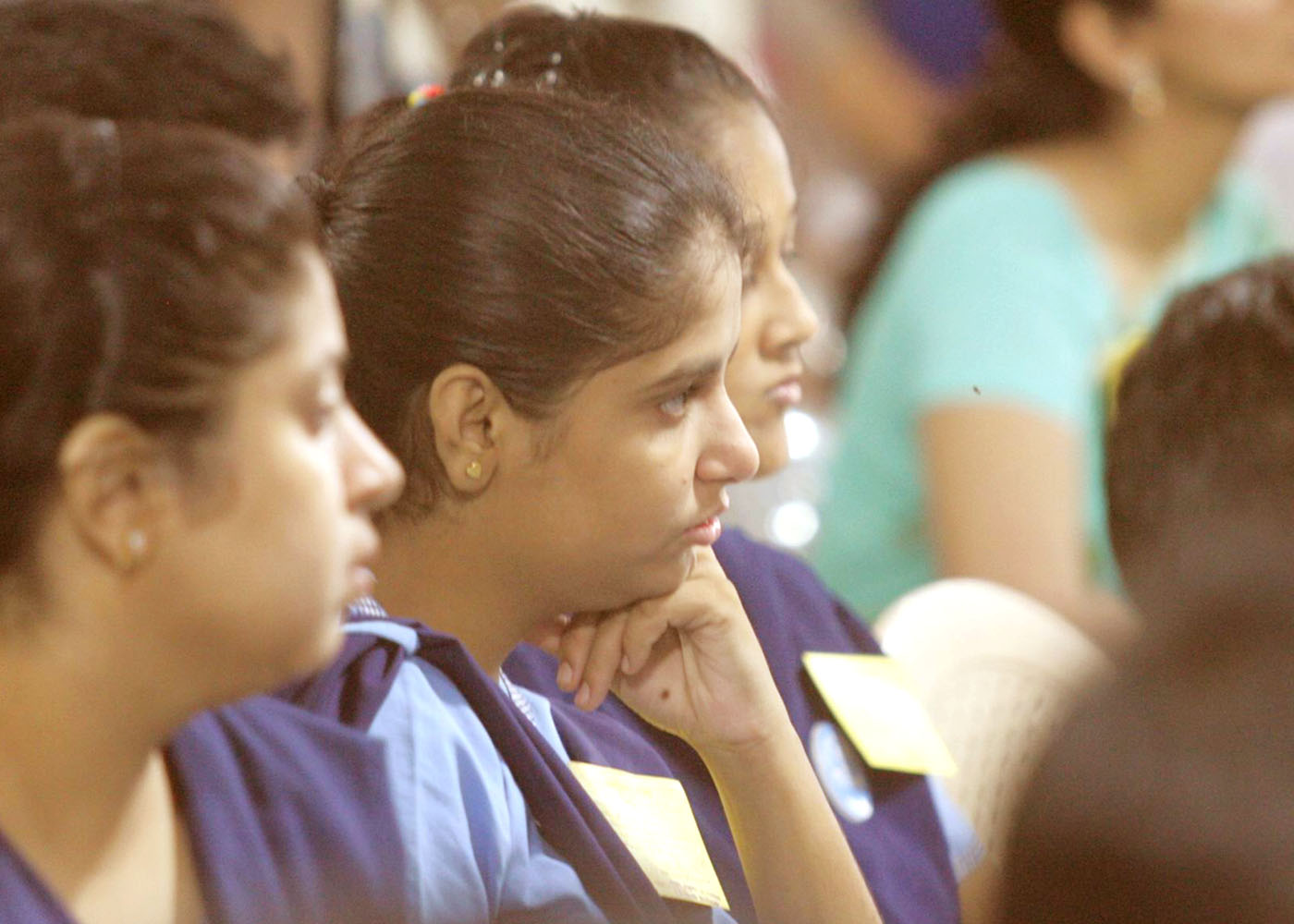

My Experience with Cochlear Implants
When I visited Vikram hospital in Coimbatore few years back, I realized technological intervention is possible for bringing back hearing to the deaf and dumb children by implanting a device called Cochlear Implant. Dr. Aruna Viswanathan and her team demonstrated to me about the whole process of implanting the device and the subsequent training procedure to the children. I saw 4 year old deaf and dumb children. After one of month of implanting and training they spoke out few words legibly. After 6 months of computer-aided training, I have seen the children speaking normally. This touching scene moved me. I felt that I have to work to bring the cost of cochlear implant down, so that thousands and thousands of children in India and abroad can afford to have this device and lead a normal life. That is why I am with you today.
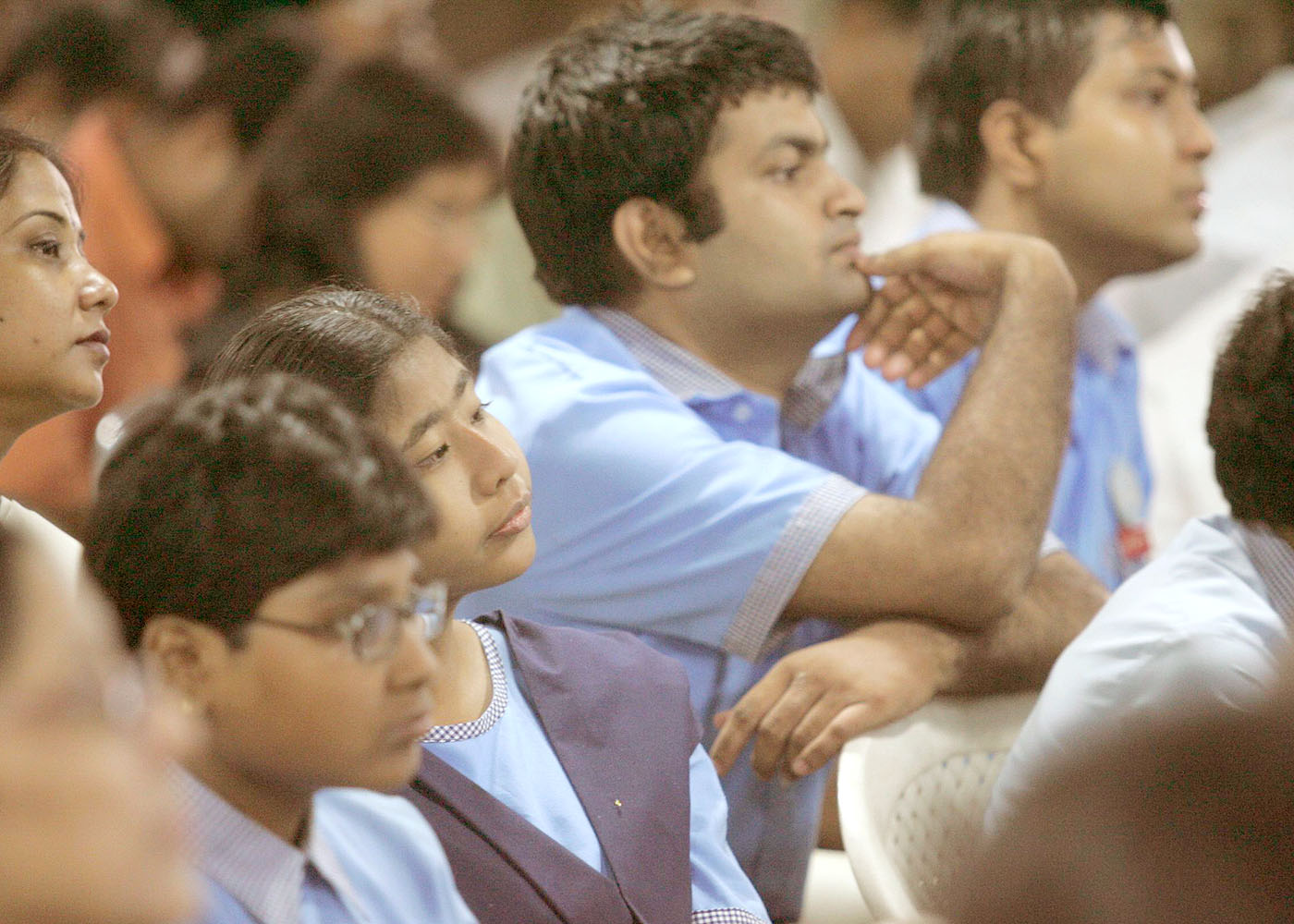

Cochlear Implant
Regarding the profound hearing disability, treatment is undertaken only in very few medical institutions since it needs a special device called cochlear implant. When the child doesn't have the hearing capacity it leads to dumbness. Cochlear implant coupled with computer aided training helps the deaf and dumb individuals to regain near normal hearing/speaking capabilities. Basically it is bypassing the damaged inner ear portion by replacing its functions with an electronic system having external mike, speech processing circuit, transmitter and a receiver. The receiver is implanted below the ear. The receiver has an electrode, which will be inserted into the cochlear portion of the ear. Speech processor processes the input audio signals and converts them into electrical signals in various channels. The transmitter transmits these signals to the implant's multi-channel electrode, which terminates in various points of the cochlear. The latest cochlear implant technology, contour advance, recently introduced in India, is specifically designed to protect the small and delicate cochlea structures during surgery. This helps to preserve any residual hearing. Its curved shape also provides more focused stimulation of the hearing nerve for better quality outcomes. The further research in cochlear implant must lead to design and production of cochlear implants which will need minimum invasive procedures for fitment. The scientists at NSTL, Vishakapatnam under the leadership of Shri Bhujanga Rao are working on the development of indigenous cochlear implant in collaboration with SITAR (Chip Design and Manufacturing Facility).


Blossoming of spirit of service
I have experienced how the composite product technologies have helped the disabled to have light weight artificial limbs or FROs (Floor Reaction Orthosis) ? Calipers at an affordable cost. I could see the happiness of the recipients in Bhuj after earthquake disaster and in remote villages in Ranga Reddy district. Now I would like to narrate my experience of visiting a FRO Camp at Belgaum for providing rehabilitation to polio affected and special children.
A seven year old boy Master Bhimappa, son of a labourer belonging to Belgaum District, Karnataka studying in primary school had lost both his lower limbs in a road accident. He wrote me a letter seeking help for rehabilitation. Then three of my friends Dr. A.S. Pillai, Dr. L. Narendranath, Shri. Mayank Diwedi, went into action.
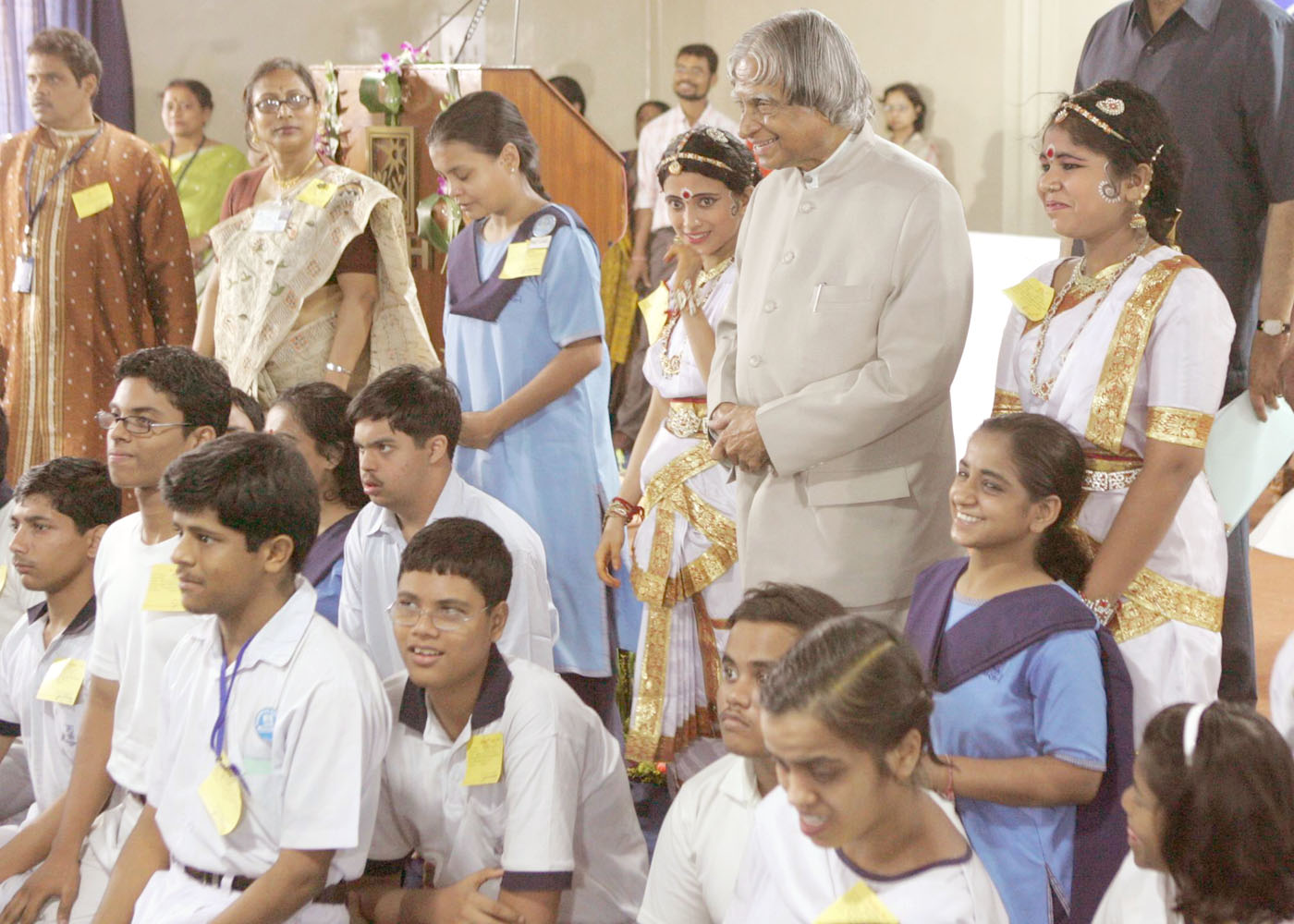
Dr. Narendranath, Orthopaetic Surgeon, NIMS, Hyderabad examined the boy ? diagnosed and prescribed bilateral above knee prosthesis for him. Sthree Sakthi of Lions club of Belgaum came all out to help the boy by taking him to Hyderabad and treatment commenced on fitment and gait training. With this prosthesis fitment, Master Bhimappa walked confidently and was able to negotiate distances comfortably. Based on this experience Belgaum camp was arranged. After this event, there were FRO camps at Loni (Maharashtra), Nallakonda (Andhra Pradesh) and Tirunelveli (Tamil Nadu). So far, they have already completed fitment of 10,000 FROs. Later, a FRO camp was held at Majitar near Rangpo for the first time for rehabilitating polio affected children of north-eastern States. This shows the nobility of heart of all the participants in this mission.
I would suggest Manovikas Kendra can work with Nizam Institute of Medical Sciences (NIMS) for providing relief and rehabilitation to the differently abled children and bring smiles in their faces.
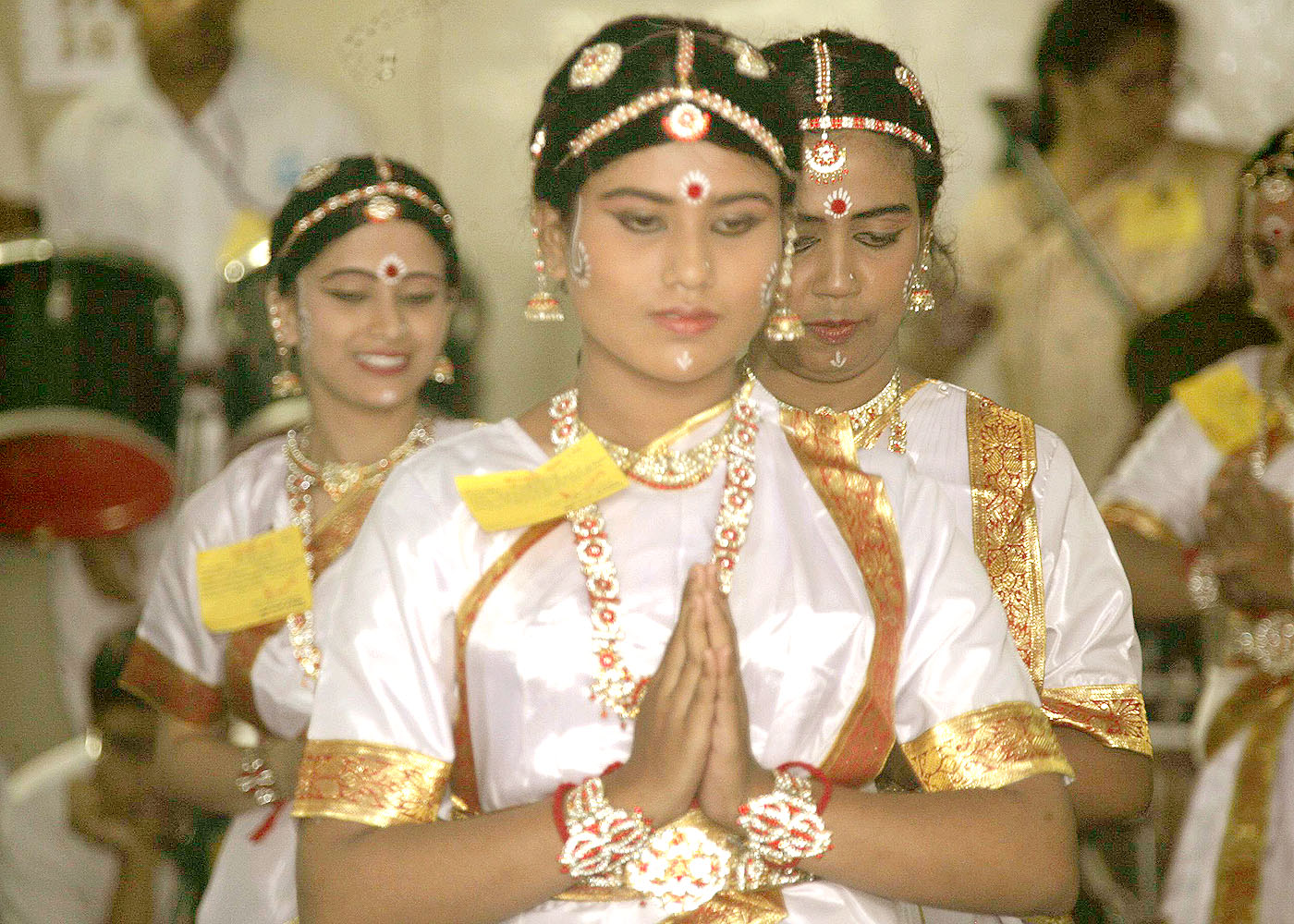

Application of Technology for Care
Recently, I saw in Athens in Greece cerebral palsy rehabilitation being tele-broadcast to mothers of various houses which has cerebral palsy patients. Mothers are taught how to handle the children with kindness and motherly affection. This is a very effective treatment. I would suggest similar tele-broadcasting system can be created by Mentally challenged children care centres which can be linked to the houses where the Mentally challenged children live. This will enable better care and management of such children by their parents.
These lessons can be broadcast by the National Channel for educating the mothers and care givers.

Indomitable Spirit
Now I would like to explain an incident which took place in Rashtrapati Bhavan, where I met about 1000 differently challenged children, who were taking part in the Abilympics. They were extremely enthusiastic to visit Rashtrapati Bhavan and the environment gave them happiness. To that gathering, I recited a small poem, which runs like this:
We are all God?s children,
Our minds are stronger than diamond.
We will win, win, win with our mighty will.
God is with us who can be against!
On hearing this, a boy from Iran by name Mustafa came to me, who didn?t have both legs and was fitted with artificial limbs. He thrust a paper in my hand. He had written a beautiful poem titled ?Courage?, in Persian language. It reads like this:
Courage
I don?t have both legs
But I possess great will power to learn and live
My mind says: Don?t weep, don?t weep
For, I need not bow even in front of a King.
I was really moved by the positive thinking of that boy. It shows his courage to face the life with optimism. I wish all of you to carry this message to make your life meaningful.
My best wishes to all the members of Manovikas Kendra success in their mission of facilitating the specially abled children to achieve near normalcy in life through their kindness and care.
May God bless you.
Dr. A. P. J. Abdul Kalam
<<Back
|